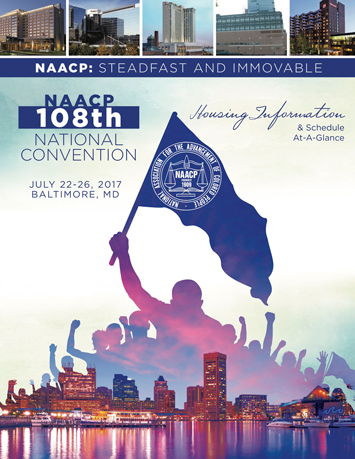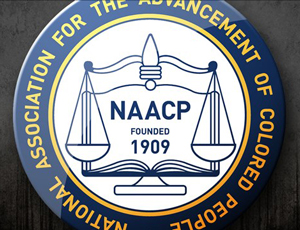Questions and obstacles face oldest civil rights group
By Nisa Islam Muhammad -Staff Writer- | Last updated: Jul 27, 2017 - 3:26:08 PMWhat's your opinion on this article?

|
“This urgent restructuring must begin with the NAACP National Board. The NAACP National Board is too large to function effectively. The Board of 64 members must be reduced. The present Board is noted more for its size, than its effectiveness. A Board half its size is more realistic and in line with best practice board governance standards of operation and effectiveness,” explained the letter.
“What is the mission and vision for the NAACP today? If you get on a bus, you want to know where the bus is going. We don’t know where the NAACP is going. This is the reason many, particularly millennials are not getting on the bus called the NAACP.”
Currently, the NAACP is technically without a president since former president, Rev. Cornell Brooks’ contract expired without renewal. Is this letter just sour grapes because their man, a fourth generation AME minister, is no longer in charge?
“No. His firing contributed to the letter, it in fact validates the point of the letter. His firing does not, however, invalidate the contents of the letter. He has been trying to get the NAACP to move in a position they are unwilling to move. He wants the NAACP to be more relevant. He pushed them to a degree and they fired him for that,” Dr. Wilmer Leon, political scientist and commentator told The Final Call.
“The letter is spot on and could have been even stronger. Earlier iterations of the letter were stronger than what was published. I called contacts in the church and a younger faction of pastors wanted to be more aggressive in their approach. But church elders didn’t want it to be that strong. We don’t have to burn bridges,” Dr. Leon added.
The same gauge the AME church is using to measure the NAACP they are using on themselves.
“To be perfectly honest,” the bishops wrote in that same letter, “the same challenges that face the NAACP, face mainline faith denominations. We are old, and have not structured or positioned ourselves to meet the times in which our congregants live. The Black Church is seeking to confront its own challenges, and we call upon the NAACP to do the same.”

|
The Bishops’ letter was answered on July 14 with a released statement entitled, Journey Together: NAACP and African Methodist Episcopal Church.
“For the past two months, we have been working to refresh our leadership and seek new perspectives and new voices, to both help us carve out our new path and communicate to the next generation of activists and advocates. We have also been conducting a comprehensive assessment of our infrastructure and operations, as part of a strategic re-envisioning.”
The letter continued, “We look forward to imminently launching a nationwide listening tour, the first one in our history, to gain an even better understanding of what we do well and what we can do better. As the AME wrote in an acknowledgement of our response to their letter, the listening tour is an effort to push the needle forward on civil rights, legal and social justice.”
It went on, “And as we travel to different cities, we want to speak to all of our members, partners and supporters in this fight, from the new movements for social change to the long-time civil rights guardians who have spilled blood so that we can enjoy the freedoms we have today, and many more.”
For many, any changes start with restructuring the board. The board is too large, said Dr. Leon. “Just look at who sits on their board, it’s corporate America. The NAACP has been compromised. During the mortgage crisis, the NAACP sued Wells Fargo during Ben Jealous’ term as president,” he said.
“Quietly the lawsuit gets settled and Wells Fargo becomes a platinum sponsor of the NAACP Image Awards. There are allegations, people got bought off. When you look at the board, it doesn’t represent the Black community. They take money from entities that prey on the Black community.”
The Bishops’ letter addressed this as well, “Who sponsors and funds our conventions? Tobacco, alcohol, certain self-interested union leadership and other entities to name a few, that effectively harm our people. Do you rely on this support because our own people aren’t supportive financially? Could this non-support be because people interested in advancing the interests, access and opportunity of African Americans don’t believe the NAACP is relevant?”
For one young woman, the NAACP gets mixed reviews.
“My grandparents were members of the NAACP and that impressed me growing up. I like what they do considering they’ve been around for so long. I think they are, more or less, still relevant to what’s going on but they have to find a way to reach young people,” explained Darnisha Harrington who is in her 20s, to The Final Call.
“They have the ears of some people others can’t reach. When I think of older people doing civil rights work and voter registration work, I think of the NAACP. But for my generation, I don’t know.”
INSIDE STORIES AND REVIEWS
-
-
About Harriett ... and the Negro Hollywood Road Show
By Rabiah Muhammad, Guest Columnist » Full Story -
Skepticism greets Jay-Z, NFL talk of inspiring change
By Bryan 18X Crawford and Richard B. Muhammad The Final Call Newspaper @TheFinalCall » Full Story -
The painful problem of Black girls and suicide
By Charlene Muhammad -National Correspondent- » Full Story -
Exploitation of Innocence - Report: Perceptions, policies hurting Black girls
By Charlene Muhammad -National Correspondent- » Full Story -
Big Ballin: Big ideas fuel a father’s Big Baller Brand and brash business sense
By Bryan Crawford -Contributing Writer- » Full Story






 Click Here Stay Connected!
Click Here Stay Connected!








